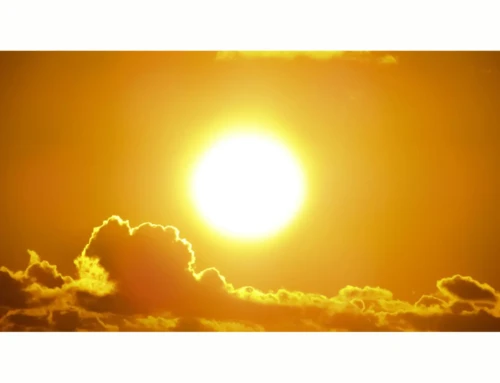Don’t you just wish that we could see these from Crondall? Before we cover more about what causes the Northern Lights, the frequency that they can be seen and even how likely are we to see them today, just enjoy this short video shot in Finland of why the Northern Lights intrigue and fascinate so many people. If you are looking for the latest sunspot image then click here
The Northern lights are poetry, they are nature’s light show. They are elementary particle physics, superstition, mythology and fairy tales. The northern lights have filled people with wonder and inspired artists; they have frightened people to think that the end is at hand.
So What causes the Northern Lights?
To answer this, we start with the sun whose energy production is far from even and fluctuates on an 11 year cycle. Maximum production coincides with high sunspot activity when processes on the sun’s surface throw particles far out in space. These particles are called the solar wind and cause the northern lights. The sun’s surface temperature is approximately 6,000C, much cooler than the interior which is several million degrees. In the sun’s atmosphere or corona, the temperature rises again to several million degrees. At such temperatures, collisions between gas particles can be so violent that atoms disintegrate into electrons and nuclei. What was once hydrogen becomes a gas of free electrons and protons called plasma. This plasma escapes from the sun’s corona through a hole in the sun’s magnetic field. As they escape, they are thrown out by the rotation of the sun in an ever widening spiral.
After a few days travel through space, the plasma reaches earth’s magnetic field, gets compressed on the daylight side of the earth, and stretches into a tail on the nightside, which stretches out into a long cylinder. Its diameter is equivalent to 15-30 times the earth’s diameter, and its length up to 500 times.
When the northern lights break out the solar wind strengthens and the magnetic tail becomes unstable. Charged particles dive inwards towards the center of the tail and cause it to increase in length and to taper. Most of the northern lights we see come as the electrons accelerate into the ionosphere.
How Often Can They Be Seen ?
Well it all depends on where you are: Within the so called auroral zone, the aurora can be seen every clear winter night. There are other regular variations:
- The aurora is most frequent and intense from 2200 to midnight, magnetic time.
- Brilliant auroras often occur at 27-day intervals as active areas on the sun’s surface face earth during its 27-day rotation cycle.
- Northern lights are more frequent in late autumn and early spring. October, February and March are the best months for auroral observations in say northern Norway.
- Northern lights activity corresponds closely to sunspot activity, which follows an 11-year cycle, but there seems to be a one-year delay between sunspot maximum and maximum auroral occurrence.
- Northern lights activity is 20-30% less during solar minimum than at solar maximum.
Sunspots are the dark part of the sun’s surface that is cooler than the surrounding area. It turns out it is cooler because of a strong magnetic field there that inhibits the transport of heat via convective motion in the sun. The magnetic field is formed below the sun’s surface, and extends out into the sun’s corona. As well as being a darker area on the sun, a sunspot is an area that temporarily has a concentrated magnetic field. This magnetic force inhibits the convective motion, which ordinarily brings hot matter up from the interior of the sun, so the area of the sunspot is cooler than the surrounding plasma and gas. But sunspots are still actually very hot. Instead of being about 5700 degrees kelvin like the rest of the photosphere, the temperature of a sunspot is more like 4000 degrees kelvin.
The latest picture of the sun and any sunspots can be seen below, with a bigger image and more details here:
On average Northern lights can be seen during the solar maximum at:
Andenes, Norway
Almost every dark and clear night
Fairbanks, Alaska
Five to ten times a month
Oslo, Norway
Roughly three nights a month
Northern Scotland
Roughly once a month
US/Canadian border
Two to four times a year
Mexico and Mediterranean countries
Once or twice a decade
South of the Mediterranean countries
Once or twice a century
Equator
Once in two hundred years
How do we know if Northern Lights are Likely?
Well because they are all to do with electrical charges it’s possible to monitor changes in the atmosphere. There are a number of monitoring sites which you can go to see the likelihood.
If you pop over here we have the latest status for the UK as well as a really good map showing the view over the North Pole.

We also can recommend this app for giving you the latest information on where and when the aurora is happening, just click on the image or go here
If you enjoyed reading this, the please explore our other articles below:




